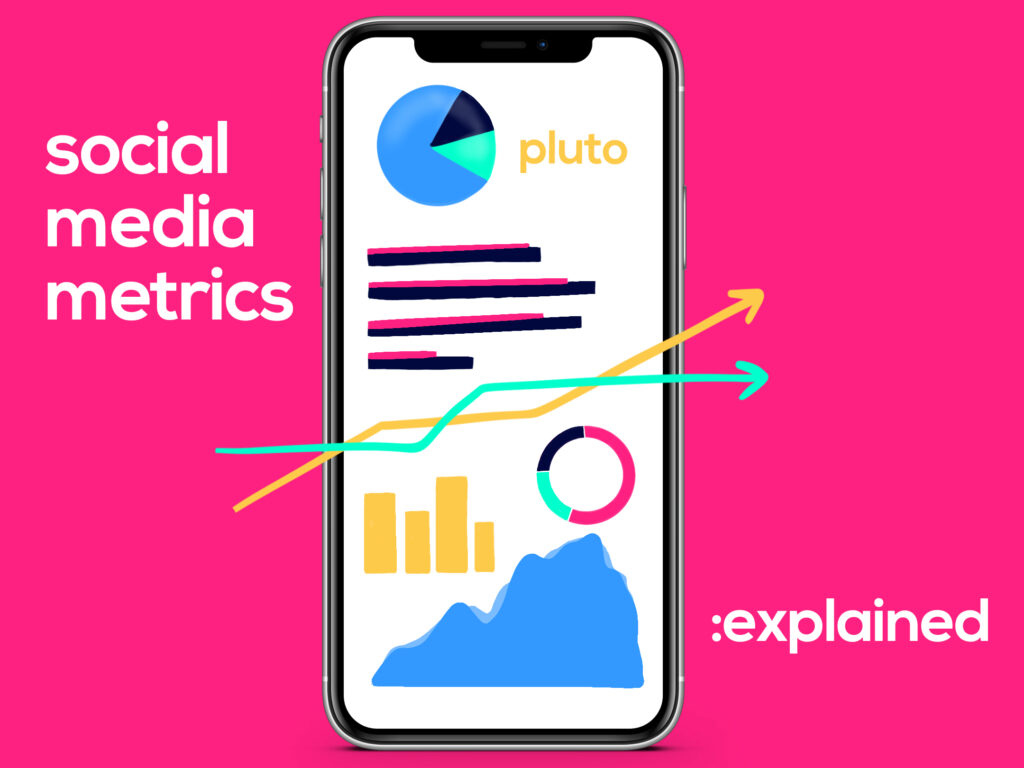What do we mean when we talk about social media metrics? When dipping your toe into social media marketing, it can be tricky to make sense of all the numbers that are fed back to you at the end of a campaign. Numbers on a screen are great, but how do we know if the campaign actually made an impact?
What are social metrics?
Metrics are a digital marketer’s way of showing the value of their content, social media strategies, and ad campaigns. These include the overall reach of the campaign, how many people engaged with it, how much the ad cost, and even demographic breakdowns of who your ad performed best with.
There are a lot of other figures to take into consideration too, and it can become quite overwhelming. From knowing what they are, what they track, how it can apply to your business, it can be a lot to take in!
We have mapped out the four key metrics we live by below.

Reach
First and foremost we have reach. Reach represents the number of people seeing your content. A single, unique person can only account for a reach value of 1, and no more. This is where it differentiates itself from impressions.
Impressions
Impressions, on the other hand, represent the amount of times a person sees your content. Your content can appear on someone’s feed more than once, therefore, a single, unique person can account for an impression value of 1+.
What you can learn from both of these metrics is very important.
Depending on your goal, these values can tell you if you are posting at the right time of day and if you are targeting the right people.
But keep in mind, a high count for reach and impressions doesn’t necessarily mean your ads are working. You may be reaching a high number of people, but how many of those people are your target audience? How many of those people are paying attention?
With that in mind, make sure the content you are creating and publishing is relevant to your audience, eye-catching, shareable, and relatable. Know who you are marketing to and know where they live online. You can have a great ad but if it isn’t suitable for the social platform you’re sharing it on, then you are simply wasting your time.
This, of course, takes trial and error but by regularly checking impressions you will soon see what’s working and what isn’t. If you notice your impression value increasing, this can tell you that the content you’re making is being optimised for the platform it is shared on. It tells you the platform has recognised your ad as something users want to see and vice versa.
Reach and impressions are key metrics to keep an eye on when focusing on brand awareness and brand perception.

Engagements
Another great way to tell whether your ads are working is by tracking the queen of all metrics, engagements.
Do people like your content?
Now you know how many people see your ads, but do they like it enough to interact with it?
This action could be anything from liking, commenting, and/or sharing. Keep in mind, different platforms have different features and methods of calculating the engagement. An engagement on Twitter includes a retweet, while an engagement on TikTok includes a duet, so don’t forget to track these unique features too.
Engagement seems like an almost impossible task in a world where people mindlessly scroll for hours on their phones, taking in only about 20% of what they see. So, to create an ad that stops people in their tracks is a superpower nowadays.
Algorithms work in a way that boosts the content that users engage with, which in turn benefits other factors like reach and impressions. Social platforms want to keep people online as long as possible, so they recognise content that is performing well and serve it to people with similar interests.
By looking at a combination of metrics, for example, impressions and engagement, you can find out whether your ad is working on your target audience. Remember, high impressions count means very little if your engagements are low. But, as mentioned above, producing the content your audience wants to see will more than likely prevent this result.
As well as this, check your engagement rate against the industry standard – a high percentage will confirm you are sharing content that your audience finds interesting.
CPM
Last but not least, we have CPM. CPM stands for Cost Per Mille (Cost Per Thousand Impressions).
Simply put, it tells you the cost to publish an ad and have it seen by thousands of people.
CPM is constantly fluctuating and is reactive to certain times of the year, e.g., Christmas or Valentine’s Day depending on your product or service. At Christmas time, CPM will naturally be higher because advertisers are all competing for ad space and increasing ad spend for the festive season.
On the other hand, the pandemic saw CPM fall because of the vast increase of people at home and online, meaning impressions were very high regardless of ad spend. A low CPM is favourable because it means your ad is being seen by thousands for a cheaper price, but if those views aren’t translating into conversions then you need to re-evaluate your ad content.
For this reason, it’s also important to look at the industry average and benchmark. If you find your CPM is low but sales are unaffected, this could be a good indicator that you’re not investing your ad spend into the right websites/social platforms, i.e., platforms where your audience is not present.
Reach, impressions, engagements, and CPM all go hand in hand and each one affects the other. But of course, there are many other factors to consider;
- Know what periods of the year are key sales periods and increase ad spend accordingly to ensure you’re reaching your audience.
- Always keep an eye on past data and notice where there are dips and rises, and act accordingly.
- Keep an eye on industry standards to see where you are compared to competitors.
Need a hand with your paid social advertising strategy, or making awesome content? Get in touch here.






